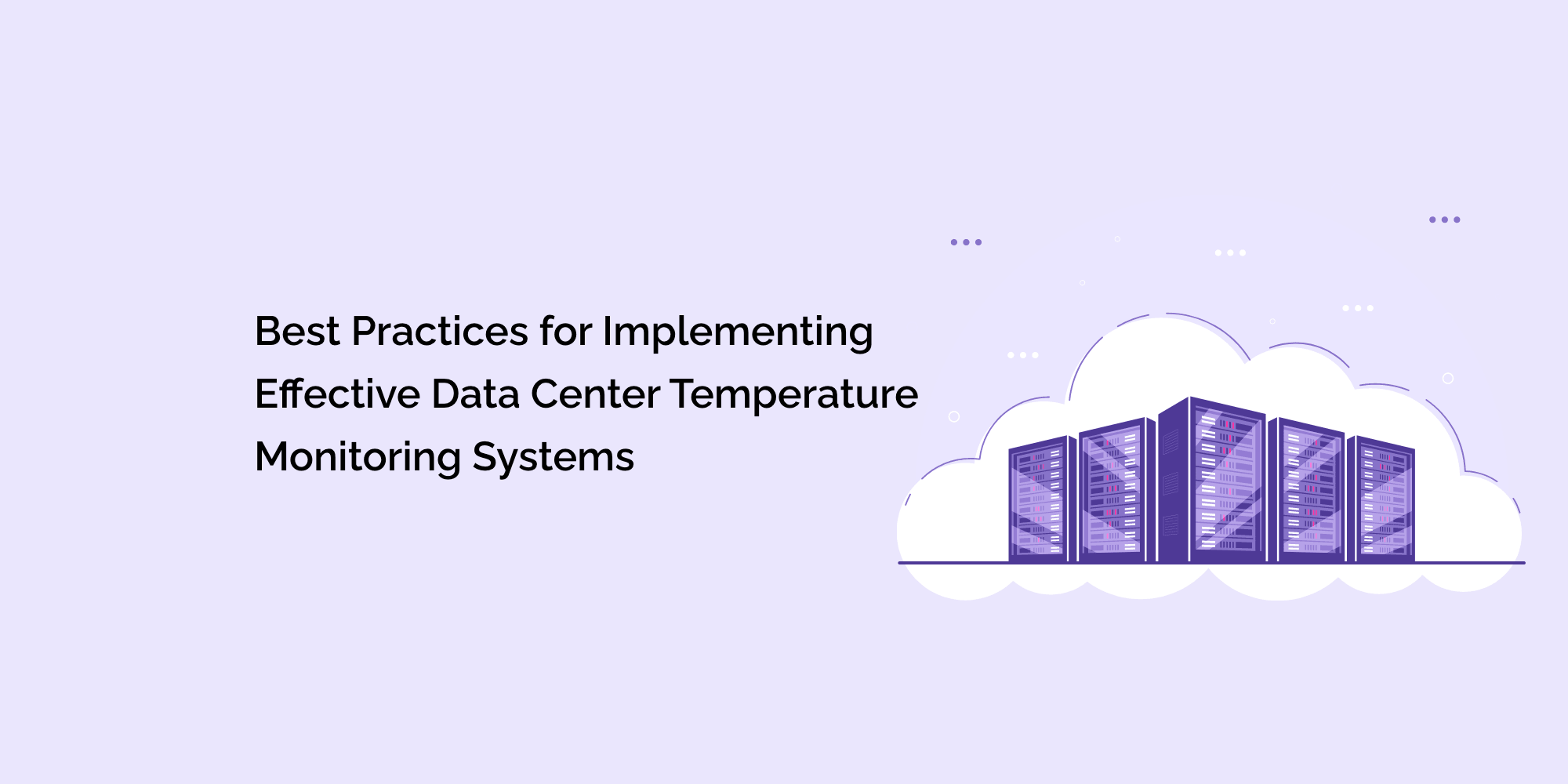Data centers are the backbone of the digital world, hosting critical applications and managing vast amounts of data for businesses, organizations, and individuals. The efficient and reliable operation of data centers is paramount to ensure uninterrupted access to information and the seamless functioning of online services. Temperature monitoring is a crucial aspect of data center management, as temperature fluctuations can significantly impact data center equipment's performance, efficiency, and longevity. This blog will explore the best practices for implementing effective data center temperature monitoring systems, understanding the importance of temperature monitoring, and ensuring optimal data center performance and reliability.
The Importance of Data Center Temperature Monitoring
Temperature monitoring in data centers is essential for several reasons:
-
Equipment Performance and Reliability: Temperature fluctuations can directly impact the performance and reliability of data center equipment. Overheating can cause hardware components to malfunction, reducing processing speeds, increasing error rates, and hardware failures.
-
Energy Efficiency: High temperatures can increase cooling requirements, energy consumption, and operating costs. Effective temperature monitoring can optimize cooling systems and conserve energy.
-
Preventing Downtime: Proactive temperature monitoring helps identify potential temperature-related issues early on, allowing administrators to take preventive measures and avoid unexpected equipment failures that may lead to costly downtime.
- Equipment Lifespan: Consistent exposure to high temperatures can accelerate the wear and tear of hardware components, shortening their operational lifespan. Regular temperature monitoring can extend the life of critical data center equipment.
Selecting the Right Temperature Sensors:
Choosing the appropriate temperature sensors is the first step in implementing an effective temperature monitoring system. Consider factors such as accuracy, precision, compatibility with the data center environment, and the ability to provide real-time data.
Strategic Sensor Placement:
Strategically place temperature sensors throughout the data center to ensure comprehensive coverage. Install sensors in server racks, air conditioning, power distribution, and other critical equipment areas. The goal is to monitor temperature variations in different data center zones.
Remote Monitoring Solutions:
Invest in remote monitoring solutions that allow data center operators to access temperature data from anywhere. Cloud-based monitoring platforms enable real-time alerts and access to historical data for analysis, even when administrators are not physically present in the data center.
Temperature Thresholds and Alarms:
Set temperature thresholds based on equipment specifications and manufacturer recommendations. Configure temperature alarms to notify administrators when temperatures exceed or fall below acceptable limits. Immediate alerts enable rapid response to potential temperature-related anomalies.
Regular Maintenance and Calibration:
Perform regular maintenance and calibration of temperature sensors to ensure accuracy and reliability. Out-of-date or faulty detectors can provide inaccurate readings, leading to potential temperature-related issues.
Integrating Environmental Monitoring:
Incorporate temperature monitoring into a comprehensive environmental monitoring system. This includes monitoring humidity, air pressure, and other environmental factors influencing data center performance and reliability.
Predictive Analytics:
Leverage predictive analytics tools to analyze temperature data over time. This can help identify temperature trends and anomalies, enabling data center operators to take proactive measures before issues escalate.
Data Center Cooling Optimization:
Combine temperature monitoring with cooling optimization strategies. Implement techniques such as hot aisle/cold aisle containment, precision air conditioning, liquid cooling, and computational fluid dynamics (CFD) analysis to enhance cooling efficiency and maintain consistent temperatures.
Redundancy and Fail-Safe Measures:
Implement redundant temperature sensors and monitoring systems to ensure continuous data center temperature monitoring, even during sensor failures. Redundancy is crucial to maintain constant awareness of temperature conditions.
Staff Training and Awareness:
Train data center staff on the importance of temperature monitoring and best practices for handling temperature-related issues. Awareness and proactive measures can significantly contribute to optimal data center performance.
Compliance and Reporting:
Ensure that your temperature monitoring system complies with relevant industry regulations and standards. Maintain detailed records and reports of temperature data for auditing purposes.
Certainly! Here are some frequently asked questions (FAQs) related to data center temperature monitoring:
What are the best practices for data center temperature monitoring?
Best practices include using distributed temperature sensors, implementing redundant cooling, regularly inspecting cooling systems, monitoring and controlling humidity and utilizing thermal imaging for identifying temperature abnormalities.
Can temperature monitoring contribute to data center energy efficiency?
Temperature monitoring enables data center operators to optimize cooling systems and reduce unnecessary energy consumption, leading to improved energy efficiency and cost savings.
Conclusion
Data center temperature monitoring is critical to data center management to ensure high performance, reliability, and energy efficiency. Temperature fluctuations can profoundly impact data center equipment, potentially leading to hardware failures and increased operational costs.
By implementing best practices for data center temperature monitoring, such as selecting the suitable sensors, strategic sensor placement, remote monitoring solutions, temperature thresholds and alarms, regular maintenance, predictive analytics, cooling optimization, redundancy, staff training, and compliance reporting, data center operators can maintain an optimal environment for equipment, ensuring uninterrupted data flow and seamless digital services.
Prioritizing temperature monitoring and adopting effective cooling strategies empowers data centers to continue their role as pillars of the digital world, supporting global information exchange and empowering businesses and individuals in the digital era. With a robust temperature monitoring system, data centers can meet the demands of the modern digital landscape, providing reliable services and seamless access to vital information for a connected world.








